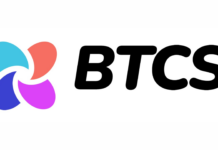
As Bitcoin and Ethereum continue to struggle with their scaling problems, an abundance of alternative high-throughput distributed ledgers are springing up, including EOS, IOTA, and many more.
Hashgraph, developed by Swirlds, and hyped as one of the leading candidates to replace blockchain, has steadily being making ground in Dublin, albeit through a circuitous route.
Conor O’Higgins, Public Relations Officer for Hashgraph in Dublin, had worked with Hashgraph investor Andrew Masanto back in 2008 in the world of digital marketing. They were not to meet again until O’Higgins visited Burning Man this year and bumped into his old friend.
Burning Man is a hotbed of new thinking, and Masanto could not wait to introduce O’Higgins to the founder of Hashgraph, Dr Leemon Baird.
“I’d used Bitcoin to pay for Burning Man, and was neck-deep in crypto, but I’d never heard of Hashgraph before,” says O’Higgins. “Andrew was eager for me to meet Leemon in San Francisco.”
O’Higgins spent a day in San Francisco with the Hashgraph team, and was blown away by Dr Baird and the technology. He signed up there and then.
O’Higgins is now masterminding the first Dublin meetup for Hashgraph enthusiasts, and is in talks with Trinity College as the venue for the launch pad.
“What really attracts me to Hashgraph is how it is leapfrogging over the issues in the blockchain,” says O’Higgins.
“Speed is a big issue for Bitcoin,” he says. “We know we have 7 transactions per second with Bitcoin, but Visa does closer to 100,000. And with Hashgraph we are looking at 250,000 plus. It’s game changing, because it opens up new applications, real-time applications like games, for which you’d never consider using a blockchain.”
Hashgraph is fairer too, employing the Gossip about Gossip protocol to achieve consensus. No miner can decide to select one transaction to go ahead of another in a block. Hashgraph is a graph, not a chain of blocks, so transactions can be added on the fly without the need for ordering, or re-ordering, by anyone.
Proof of Hashgraph’s popularity in the real world is testified to by its selection by the US National Credit Union Association and Mountain West Credit Union Association, over IBM’s Hyperledger technology, to serve as the distributed ledger platform for the 6,000 credit unions of North America.
“We will be holding a Hashgraph meetup in Dublin by the end of the year to address interest,” says O’Higgins.









